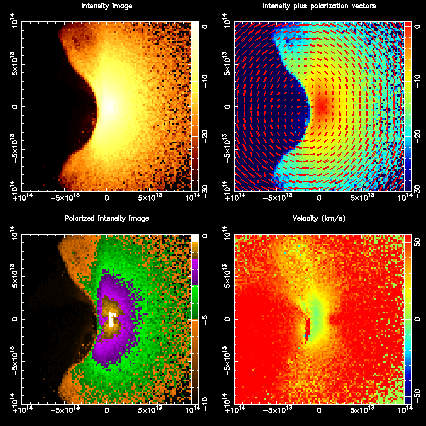 |
The image to the left is a link to a movie of a simulation of
Raman-scattering in a symbiotic binary. The panels are (clockwise,
from top left) the intensity image, the intensity image + polarization
vectors, the velocity image, and the polarized intensity. |



